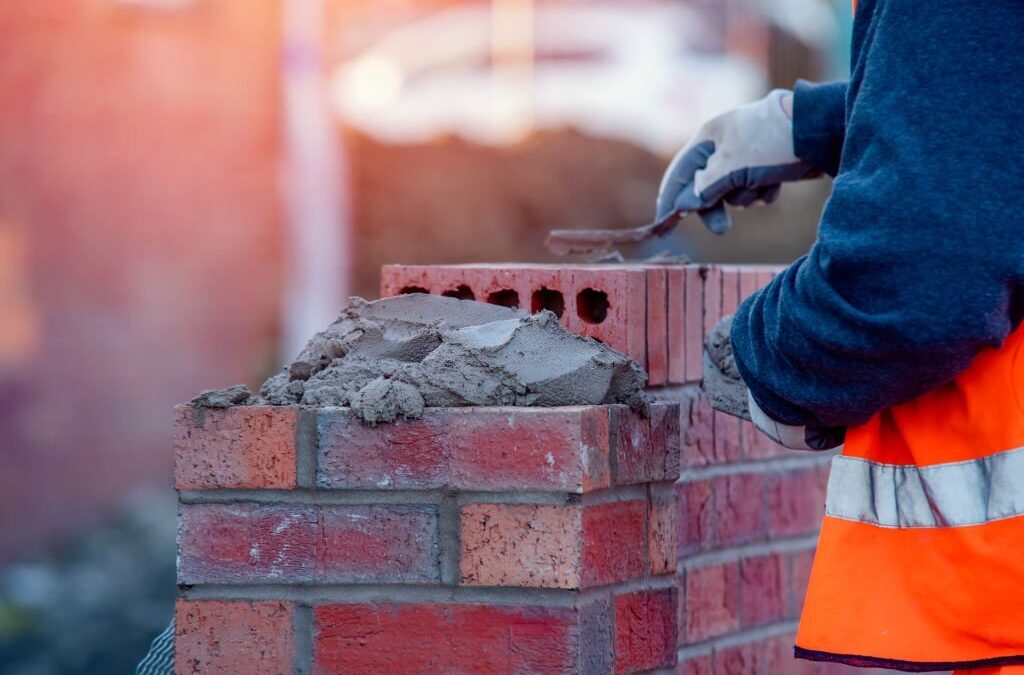Are you planning on undertaking a bricklaying project? If so, it’s crucial to understand the importance of the sand-to-cement ratio.
The ratio of sand to cement plays a significant role in the strength and durability of the bricks you lay. By achieving the ideal sand-to-cement ratio, you can ensure that your bricks will withstand the test of time and provide a solid foundation for your construction project.
To create strong and durable bricks, the sand-to-cement ratio must be carefully calculated. This ratio determines the amount of sand and cement that should be mixed together to achieve the desired consistency and strength.
If the ratio is too high in favor of sand, the bricks may be brittle and prone to cracking. On the other hand, if the ratio is too high in favor of cement, the bricks may be excessively strong but at the expense of flexibility. Therefore, finding the right balance between sand and cement is crucial to ensure the longevity and stability of your brickwork.
In conclusion, understanding the sand-to-cement ratio is essential for successful bricklaying. By achieving the ideal ratio, you can ensure that your bricks will be strong, durable, and capable of withstanding the test of time. So, whether you’re constructing a wall, a pathway, or any other brickwork, make sure to calculate the sand-to-cement ratio correctly to achieve the best results.
Understanding the Importance of the Sand-to-Cement Ratio
Do you know why the right sand-to-cement ratio is crucial for successful bricklaying? Well, let me tell you. The sand-to-cement ratio refers to the proportion of sand and cement mixed to create the mortar used in bricklaying. This ratio plays a vital role in the strength and durability of the final brickwork.
When the sand-to-cement ratio is too high, meaning there’s too much sand compared to cement, the mortar becomes weak and crumbly. This can lead to a lack of structural integrity in the brickwork, making it prone to cracks and crumbling over time.
On the other hand, if the sand-to-cement ratio is too low, with too much cement compared to sand, the mortar becomes too rigid and can result in shrinkage cracks. These cracks can compromise the stability of the bricks, making them more susceptible to damage from external forces or weather conditions.
To ensure the proper sand-to-cement ratio, it’s essential to follow the guidelines provided by professionals in the construction industry. These guidelines usually recommend a ratio of 3:1 or 4:1, meaning three or four parts of sand for every one part of cement. This ratio allows for a good balance between the strength and workability of the mortar, ensuring the bricks are securely bonded together while still allowing for some flexibility. So, the next time you embark on a bricklaying project, remember the importance of getting the sand-to-cement ratio right for a strong and long-lasting result.
Achieving the Ideal Sand-to-Cement Ratio for Strong and Durable Bricks
To achieve robust and long-lasting bricks, it’s crucial to ensure a harmonious blend of sand and cement during the bricklaying process. The sand-to-cement ratio plays a vital role in determining the strength and durability of the bricks.
Ideally, the ratio should be 3:1, meaning three parts of sand to one part of cement. This ratio provides the right balance between the two materials, allowing for proper adhesion and compactness.
When the sand-to-cement ratio is properly maintained, the bricks become more resistant to cracking and crumbling. The sand acts as a filler, reducing shrinkage and preventing the bricks from becoming too brittle. On the other hand, cement provides the binding agent that holds the bricks together. It ensures the bricks remain solid and stable, even under heavy loads or extreme weather conditions.
By achieving the ideal sand-to-cement ratio of 3:1, you can ensure that your bricks will be strong and durable. This ratio allows for the optimal mixture of materials, creating a solid foundation for your brickwork.
It’s important to carefully measure and mix the sand and cement to achieve the desired ratio. Remember, the quality of your bricks depends on the attention to detail in the bricklaying process, including getting the sand-to-cement ratio just right. So take the time to mix your materials correctly, and you’ll be rewarded with bricks that stand the test of time.

